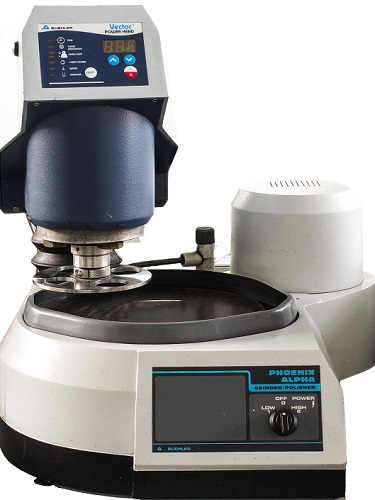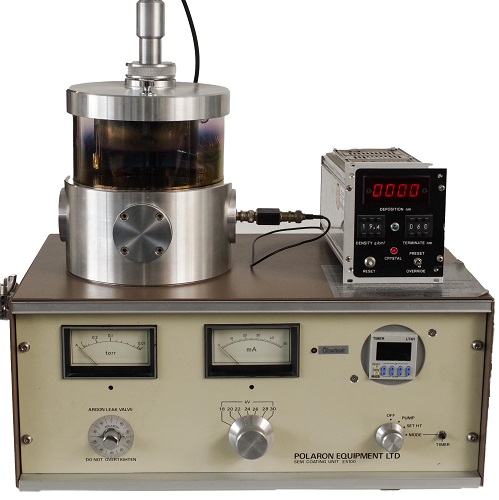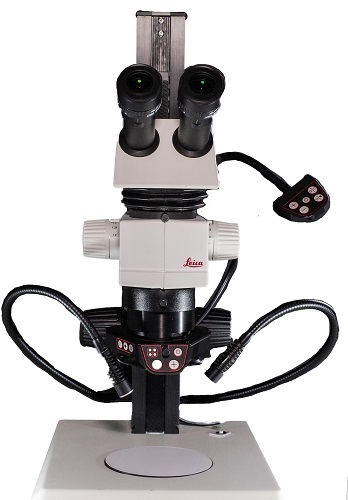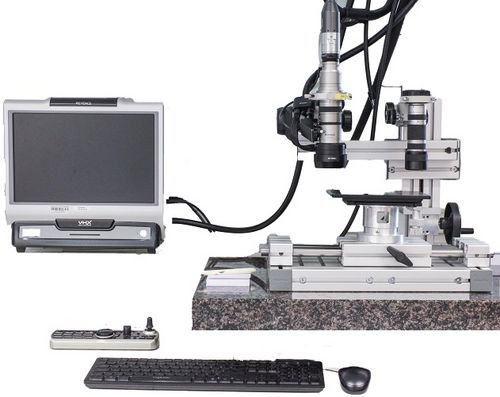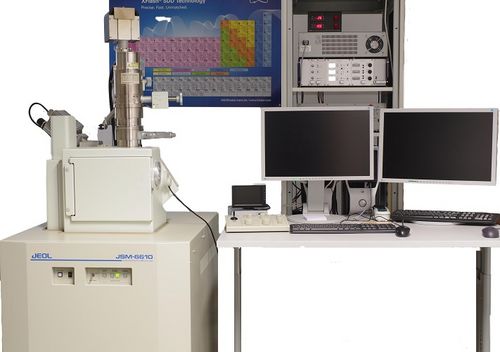Material analysis
SAMPLE PREPARATION
Separate
Separation by using the precision separating machine is used to remove small samples from a large sample bodies. The constant cooling combined with the oscillating feed prevents overheating and deformation of the microstructure.
Technical data:
TM Brilliant 250 Wet abrasive cut-off machine
• Sample size: max D = 100
• Feed: oscillating
• Speed: max. 3000rpm
• Cutting discs for various applications
Embed
Here, the samples are positioned / fixed and then pressed with appropriate powder to form a 40mm sample. This makes the samples easier to handle for later processing.
Technical data: Bühler SimpliMet 1000
• Electrohydraulic
•Embedding pressure: 80 to 300 bar
• Embedding temperature: 50 – 180°C
• Press mold: 40mm
Steaming
This allows non-metallic surfaces to be made conductive by vapor deposition with carbon so that analyses can be carried out under a scanning electron microscope. Furthermore, special material analyses can be carried out.
Technical data:
Balzer Union CED 010
• Vacuum: 0.05 mbar
• Material for steaming: carbon yarn
Microscope
System microscope
Technical data:
Olympus BX 40
- Max. enlargement: X1000
- Max. resolution: 0.27 µ
- Focusing accuracy: approx. 1 µ
- Illumination: Köhler illumination for incident light
- 5-fold objective nosepiece
Digital microscope
Technical data:
Keyence VHX-700F
- 1/1/8 CCD image receiver
- Max. resolution: 2 mio. pixels
- 3D representation of the surface
- Close range lens: enlargement X5 – X50
- Zoom lens: enlargement X20 – X200
- Universal zoom lens: enlargement X100-X1000
- High resolution zoom lens: enlargement X500-X5000
Scanning electron microscope
Technical data:
Joel JSM 6610 SE
- Cathodes: Tungsten, LaB6
- Resolution: approx. 0.5 nm at 5kV
- Enlargement: X5 – X300000
- Detectors:
- Secondary electron detector (SE)
- Backscatter electron detector (BSE), for material contrast imaging
- Energy dispersive X-ray analysis (EDX)
- quantitative and qualitative detection of elements
- Point and line analysis and distribution images
- Sample table: 5-axis
- Sample weight: max 1kg


